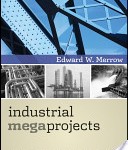This article from the Division 1 of the ABA Forum on the Construction Industry Newsletter “The Dispute Resolver” represents George T. McLaughlin’s “View from the Field” formed throughout the course of his 30+ year career in the industrial marketplace.[1] His article is broken into four parts. Part 1, below, describes the evolution of the delivery systems in large and complex industrial projects[2]. The remaining sections, which we will publish in our next three newsletters, will discuss the legal implications (Part 2), impact on claims, disputes, and resolutions (Part 3), and prevention and corrective processes (Part 4).
Part 1 of 4 – Framing the Issue
When the earth’s tectonic plates shift, unless there is a resulting earthquake, it goes unnoticed. The movement is not perceptible. Nevertheless, major changes are occurring. In large and complex projects, with three to five (or longer) year schedules, industry shifts may not be perceptible. Nevertheless, major changes and related impacts may be in progress. Trends and changes in project execution and contracting strategies are similar. These trends, however gradual and unnoticed on a daily or monthly basis, cause major impacts on existing and future projects. While industry experts cite or drive these changes, the impact on the field may be delayed or go unrecognized by many, if not all stakeholders. The business motivations driving the trends discussed below are varied and complex. Perhaps, the central theme is risk tolerance or management. The large worldwide prime contractors (typically Engineer Procure Construct) migrated toward limiting major risks by limiting scope of work, insisting on reimbursable cost (as opposed to fixed price) commercial terms, or both. Owners chose to limit or compartmentalize risks by breaking scope of work into smaller packages and seeking fixed price on these smaller packages. Construction Contractors retained a willingness to work on fixed price commercial terms; but, increased their tendency toward claims and disputes processes in order to manage their risks. Collectively, we see a myriad of fixed price scope of work packages being pieced together to form a complete project. Formerly, this mosaic of work scopes was under one Prime Contract. [Read more…]









